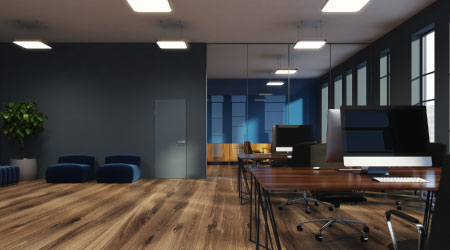Technology Changing Floor Covering Industry
The floor covering industry is being inundated by more new technology and styling trends than ever. Products, construction, styling and installation technologies are changing so fast that it is nearly impossible for maintenance and engineering managers to keep up with the changes.
Of all building materials, floor coverings of all kinds are changing most, and attitudes about floor coverings are changing, as well. The green movement has many managers reconsidering floor coverings as they look for alternatives to the most common products, such as carpet and vinyl.
But managers' interests are not always well thought out relative to the ramifications of alternative green flooring products. Certainly, some floor covering products are made from natural materials, most of which have been in existence for decades. But these products are not always the most appropriate for a particular institutional or commercial facility, and they might not work best in a particular application. Beyond that, there have been changes recently in the way they are produced and installed.
A closer look at the many changes in floor coverings can help managers make specification decisions that more successfully meet their facilities' needs.
Color Considerations
Flooring materials, particularly carpet tiles, are using lighter colors, including bright yellow and pink. Though the colors are stunning in their brilliance and visual impact, they have drawbacks.
Yellow flooring, in particular, is difficult to get and keep clean. Such bright colors might work in low-traffic areas, but in high-traffic areas, they are likely to create more frustration than managers and staffs need.
For high-traffic and high-soiling areas, managers should select colors that will hide the soiling. Light colors still show the soiling more, while dark colors show lint and dust, and medium colors hide the most staining. Patterns with colors blended or shades of a medium color or even some lighter color accents also work well and evoke more of a design element.
Imagination is the only limitation in creating almost any conceivable style and pattern. Carpet tufting and weaving machines can produce almost any design, style and pattern imaginable. This flexibility also exists in many hard-surface flooring materials. Installations themselves can become more creative by mixing materials, colors and designs.
Vinyl Tile Decisions
Luxury vinyl tile (LVT) is more a style variation than a material variation, though certainly differences exist between LVT and vinyl composition tile (VCT).
LVT typically is warmer and softer and more capable of looking like stone, wood and metal. It comes in tiles or planks, and some stone variants can even be installed with grout that is made for these products, which emulates ceramic tile, and it is more luxurious in appearance and color than VCT. It also is the hottest hard surface flooring material on the market.
VCT also is a composite material. It is used most often in commercial applications, such as grocery stores, drug stores, and hardware stores. It is a workhorse hard surface flooring material.
PVC-free vinyl flooring material also has emerged recently. This product is used as an alternative to sheet vinyl and tile flooring products. It has high performance characteristics, will fight indentations from the weight of heavy furnishings, and uses an applied adhesive that thwarts the effects of moisture and alkalinity.
Related Topics:














